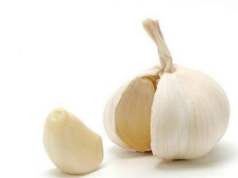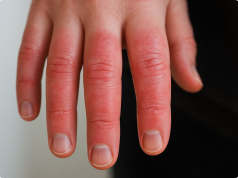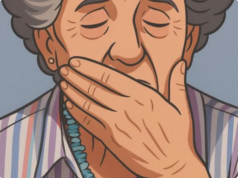Your feet are more than just your foundation — they’re messengers.
When blood flow is compromised, your feet are often the first to sound the alarm with subtle — but significant — signs.
Numbness. Cold toes. Discolored skin. Swelling.
These aren’t just minor annoyances.
They could be early warnings of poor circulation — a condition that, if left unchecked, can lead to serious health complications like heart disease, stroke, or even limb amputation.
Let’s explore what your feet might be trying to tell you — and what you can do about it.
What Is Poor Circulation?
Poor circulation — or poor perfusion — occurs when blood flow to certain areas of the body is reduced.
While it can affect any part of the body, it most commonly impacts the extremities, especially the legs and feet.
Blood delivers oxygen and nutrients to your cells. When flow is restricted, tissues suffer — leading to pain, damage, and long-term health issues.
Warning Signs Your Feet Are Sending
If you notice any of these symptoms, your circulation may be compromised:
1. Numbness and Tingling
- Often described as “pins and needles”
- Most common in toes and soles
- Caused by lack of oxygen to nerves
2. Cold Feet — Even in Warm Rooms
- A classic sign of reduced blood flow
- Blood is diverted to vital organs, leaving extremities cold
3. Leg and Foot Cramps
- Especially during walking or exercise (a condition called claudication)
- Pain typically goes away with rest — but returns when walking resumes
4. Skin Color Changes
- Feet may turn pale, bluish (cyanosis), or red
- Indicates poor oxygen delivery or blood pooling
5. Dry, Cracked, or Scaly Skin
- Poor circulation impairs skin health
- Can lead to itching, slow healing, and infection risk
6. Swelling in Legs and Ankles (Edema)
- Caused by fluid buildup due to weak circulation
- Often worse after standing for long periods
7. Visible Varicose or Twisted Veins
- Swollen, bulging veins are a sign of venous insufficiency
- Blood pools in the legs instead of returning to the heart
8. Slow-Healing Sores or Ulcers
- Cuts or blisters that take weeks to heal
- A major red flag — especially for people with diabetes
9. Fatigue and Weakness in Legs
- Muscles aren’t getting enough oxygen
- Can make walking or standing exhausting
10. Cognitive Issues (Memory & Focus)
- While not directly in the feet, poor circulation affects the brain too
- Reduced oxygen flow can lead to brain fog, poor concentration, and fatigue
Common Causes of Poor Circulation
Poor circulation isn’t a condition on its own — it’s a symptom of underlying health issues.
🔴 Atherosclerosis
Plaque buildup in arteries narrows blood vessels, restricting flow — especially in the legs.
🔴 Diabetes
High blood sugar damages blood vessels and nerves, leading to diabetic neuropathy and poor foot health.
🔴 Peripheral Artery Disease (PAD)
A serious condition where arteries in the limbs become narrowed or blocked — often mistaken for “normal aging.”
🔴 Deep Vein Thrombosis (DVT)
A blood clot in a deep vein — usually in the leg — can block circulation and become life-threatening if it travels to the lungs.
🔴 Varicose Veins & Venous Insufficiency
Damaged valves in veins prevent blood from flowing back to the heart, causing pooling and swelling.
🔴 Raynaud’s Phenomenon
A disorder where small arteries in the fingers and toes spasm in response to cold or stress, turning digits white or blue.
🔴 Lifestyle Factors
- Smoking – Damages blood vessels and reduces oxygen in blood
- Sedentary lifestyle – Weakens circulation over time
- Obesity – Puts pressure on veins, especially in the legs
- High blood pressure, cholesterol, or blood sugar – All damage vascular health
How to Improve Circulation Naturally
The good news? Poor circulation can often be reversed or managed with lifestyle changes.
✅ Exercise Regularly
- Walking, cycling, or swimming boosts blood flow
- Just 30 minutes a day can make a big difference
✅ Elevate Your Legs
- Helps blood return to the heart
- Do this for 15–20 minutes daily
✅ Stay Hydrated
- Dehydration thickens blood, slowing circulation
✅ Quit Smoking
- One of the most effective ways to improve vascular health
✅ Eat a Circulation-Boosting Diet
- Focus on:
- Leafy greens (rich in nitrates)
- Berries (antioxidants)
- Fatty fish (omega-3s)
- Garlic and onions (natural blood thinners)
- Whole grains and fiber
✅ Wear Compression Socks
- Helps prevent swelling and improves blood flow in the legs
✅ Massage & Movement
- Foot and leg massages stimulate circulation
- Wiggle your toes and stretch your calves regularly
✅ Warm Baths or Contrast Therapy
- Alternating warm and cool water can improve blood flow
Medical Treatments When Needed
For more serious cases, doctors may recommend:
- Medications – Blood thinners, cholesterol-lowering drugs, or vasodilators
- Angioplasty or stents – To open blocked arteries
- Surgery – For severe blockages or DVT
- Wound care – For non-healing ulcers
When to See a Doctor
Don’t ignore persistent foot symptoms.
Seek medical help if you have:
- Pain that interferes with walking
- Sores that won’t heal
- Sudden swelling or discoloration
- Cold feet with no clear cause
- A history of diabetes, heart disease, or smoking
Early diagnosis can prevent amputation, heart attack, or stroke.
Final Thoughts: Listen to Your Feet
Your feet aren’t just for walking — they’re early warning systems for your entire body.
Numbness, cold toes, or discolored skin aren’t “just part of getting older.”
They’re signs that your circulatory system needs attention.
So next time you kick off your shoes, take a moment to look at your feet.
Are they healthy?
Or are they trying to tell you something?
Because when it comes to your health,
👉 the warning signs are often at your feet.
Take care of your circulation — your heart, brain, and future self will thank you.










